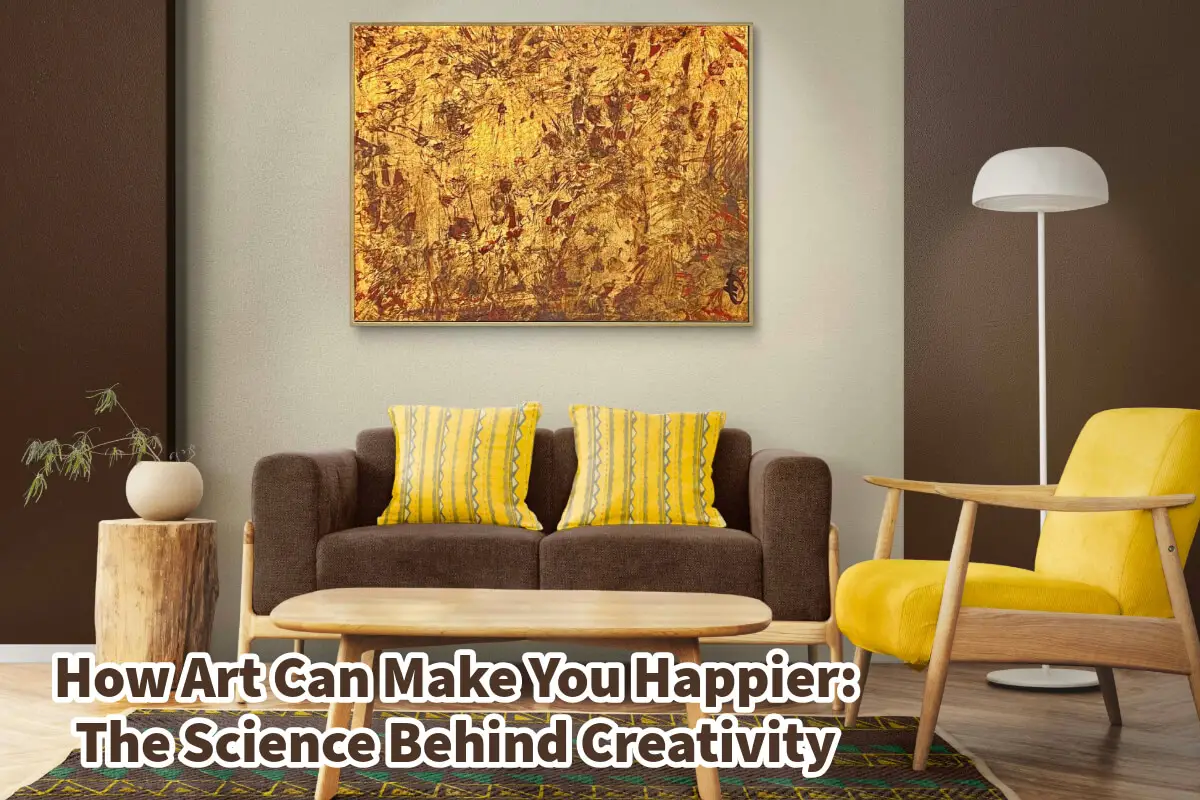Art has been a cornerstone of human civilization for millennia, transcending cultures and epochs. From the caves of Lascaux to the masterpieces of Van Gogh, art serves as a mirror to the human experience and a vehicle for emotional expression.
Beyond its aesthetic allure, art wields the power to uplift the human spirit, spark joy, and contribute to overall well-being. Recent scientific research provides compelling evidence that engaging with art—whether creating or appreciating it—can significantly enhance happiness. This blog delves into the profound connection between art and happiness, unpacking the science behind creativity and its benefits for mental health and well-being.
Table of Contents
- Understanding the Psychological Impact of Art
- The Benefits of Creating Art
- The Benefits of Experiencing Art
- The Role of Creativity in Mental Health
- How to Incorporate Art into Your Life
- Stories from Science and Real Life
- Art as a Pathway to Happiness
- Related Artwork
Understanding the Psychological Impact of Art
Art as an Emotional Outlet
Art is often described as a universal language capable of expressing emotions that words cannot. Psychologists suggest art offers a healthy outlet for processing emotions, reducing stress, and promoting catharsis.
Whether through painting, writing, music, or dance, creative expression helps individuals confront and constructively channel their feelings. This process, known as emotional regulation, is pivotal for mental health.
Neuroscience of Art and Happiness
Scientific studies reveal that engaging with art activates the brain’s reward system. Viewing or creating art triggers the release of dopamine, the “feel-good” neurotransmitter associated with pleasure and motivation.
Research published in Psychology of Aesthetics, Creativity, and the Arts suggests that people who frequently engage with art experience heightened levels of life satisfaction and reduced symptoms of anxiety and depression.
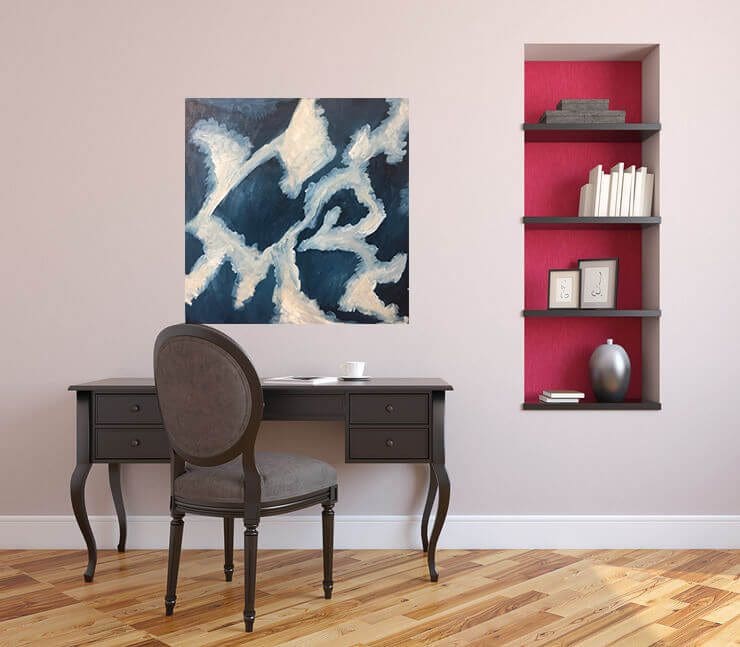
The Benefits of Creating Art
Flow State and Mindfulness
One of the most potent aspects of creating art is its ability to induce a “flow state.” Coined by psychologist Mihaly Csikszentmihalyi, flow describes a mental state in which individuals become fully immersed in an activity, losing track of time and external concerns.
This state is associated with increased happiness and reduced stress. Activities like painting, sketching, or playing an instrument often lead to this meditative zone, combining focus and relaxation.
Art also fosters mindfulness, which emphasizes being present in the moment. Drawing, sculpting, or crafting demands attention to detail, anchoring the mind and quieting intrusive thoughts.
According to the American Art Therapy Association, creating art can mimic the effects of traditional mindfulness practices, reducing cortisol levels and enhancing overall mood.
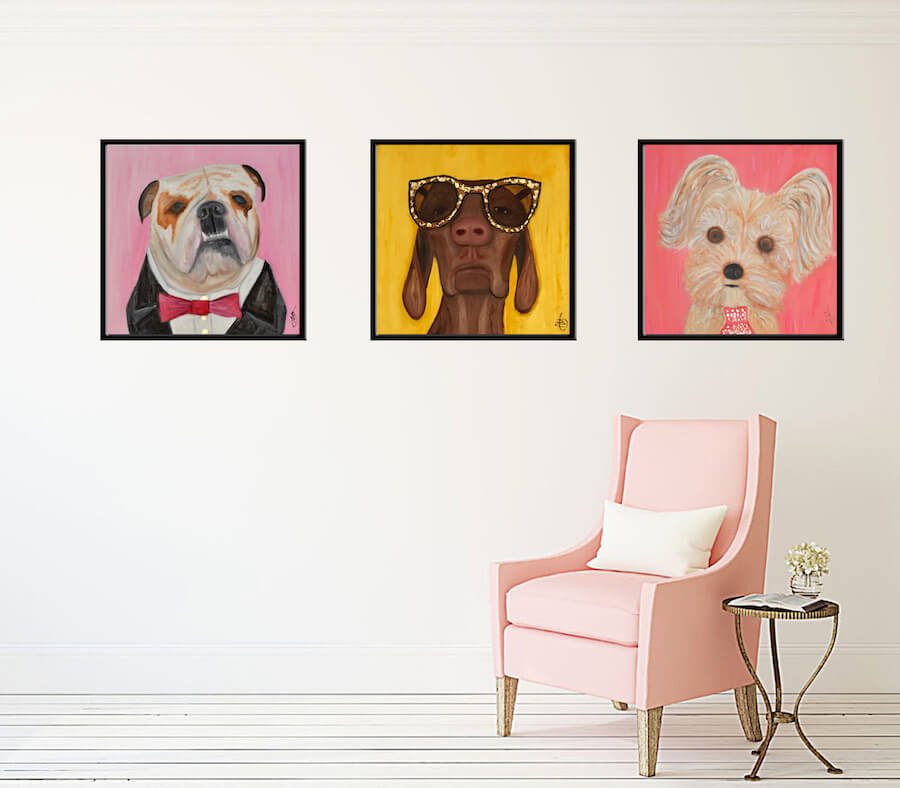
Boosting Self-Esteem
Engaging in artistic activities also bolsters self-esteem and confidence. The sense of accomplishment that comes from completing an artwork, regardless of its complexity, nurtures a feeling of capability and pride.
Art-making also allows us to celebrate individuality and self-expression, reinforcing a positive self-image.
The Benefits of Experiencing Art
Art Appreciation and Stress Reduction
Surrounding oneself with art—whether at home, in a gallery, or even through digital platforms—has been shown to reduce stress and promote relaxation.
A study by the University of Westminster found that spending just 35 minutes in an art gallery significantly lowers cortisol levels, the hormone linked to stress. Similarly, viewing art that resonates with one’s emotions can provide solace, inspiration, or even a sense of wonder.
Enhancing Empathy and Social Connection
Experiencing art can also enhance empathy and strengthen social bonds. Shared experiences of art—whether attending a theater performance, visiting a museum, or discussing a favorite novel—create opportunities for meaningful connections.
Art allows individuals to step into others’ perspectives, fostering understanding and compassion.
Art and the Aesthetic Experience
Neuroaesthetics, a burgeoning field that studies the brain’s response to beauty, reveals that encountering aesthetically pleasing art activates the brain’s default mode network. This network, responsible for introspection and creativity, fosters feelings of awe, joy, and transcendence.
Experiencing beauty through art can thus provide a profound sense of purpose and happiness.
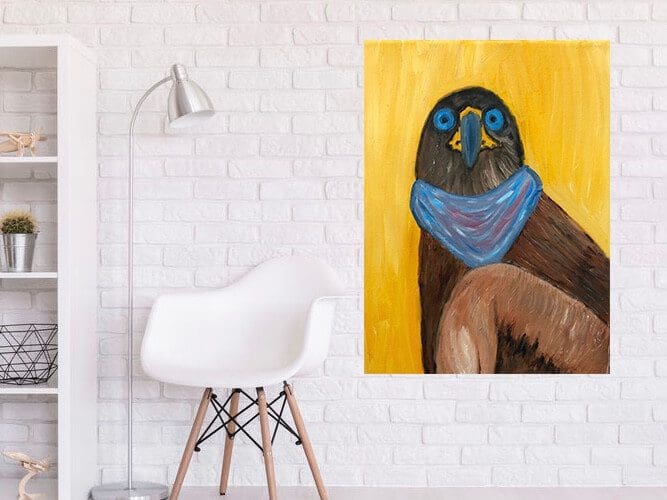
The Role of Creativity in Mental Health
Art Therapy: Healing Through Creativity
Art therapy is a clinically recognized approach to mental health treatment, using creative processes to support emotional healing. Therapists guide individuals through artistic exercises to help them articulate feelings, process trauma, and develop coping mechanisms.
Art therapy has proven effective for a range of conditions, including PTSD, depression, and anxiety.
The nonverbal nature of art therapy makes it particularly effective for individuals who struggle to express themselves through traditional talk therapy. Creating art allows clients to externalize their emotions in a safe, tangible way, providing clarity and relief.
Art as a Preventative Measure
Even outside a therapeutic setting, engaging in creative activities can be a proactive tool for maintaining mental health.
Regularly incorporating art into one’s routine—through journaling, photography, or DIY crafts—builds resilience against stress and cultivates a positive outlook on life.
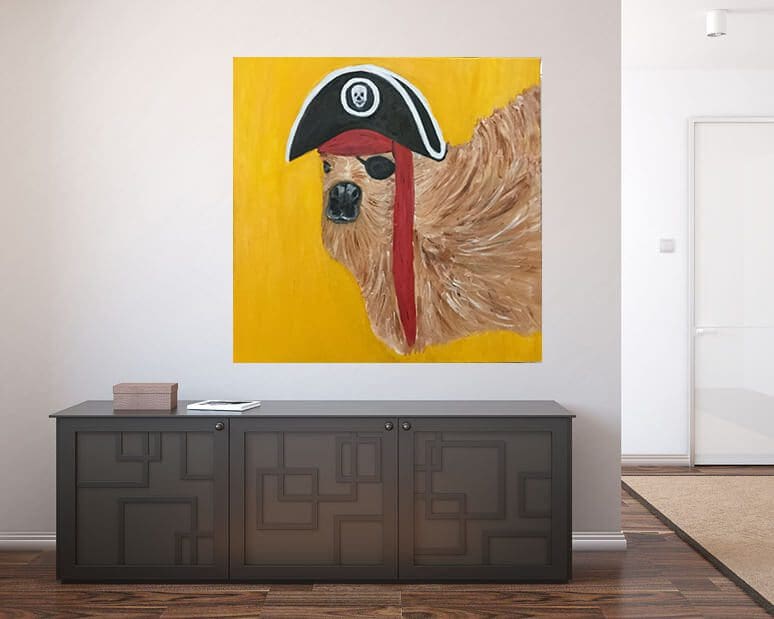
How to Incorporate Art into Your Life
Create a Personal Art Practice
Starting your artistic practice doesn’t require advanced skills or expensive materials. Consider activities like:
- Drawing or Doodling: Carry a sketchbook to jot down ideas or draw during idle moments.
- Painting: Experiment with watercolors, acrylics, or even digital tools.
- Writing: Try journaling, poetry, or storytelling to express your inner world.
- Music: Learn an instrument or compose your tunes.
Remember, the process is more important than the product—embrace imperfections and focus on enjoyment.
Engage with Community Art Programs
Joining a local art class or workshop hones your skills and fosters a sense of belonging. Community art projects, such as murals or group exhibitions, can deepen connections and amplify the joy of collaboration.
Surround Yourself with Art
Decorate your living space with artwork that resonates with you. Visit museums, galleries, or virtual exhibitions to stay inspired. You don’t need to be an art connoisseur—engage with pieces that evoke emotion or curiosity.
Share Art with Others
Participating in shared artistic experiences, such as attending concerts, theater productions, or open mic nights, strengthens relationships and builds lasting memories. These experiences create a collective sense of joy and appreciation for human creativity.
Stories from Science and Real Life
Case Study: Art and Recovery
A groundbreaking study by the Mayo Clinic explored the impact of art on patients recovering from surgery. Participants who engaged in visual art activities reported faster recovery times, lower pain levels, and improved mental health than those who did not. This underscores the therapeutic potential of creativity, even in clinical settings.
Personal Testimonies
Many individuals credit art as a transformative force in their lives. For instance, individuals with anxiety often describe how painting or crafting provides a sense of control and peace. Similarly, caregivers and educators note that introducing art to children fosters emotional intelligence and resilience from an early age.
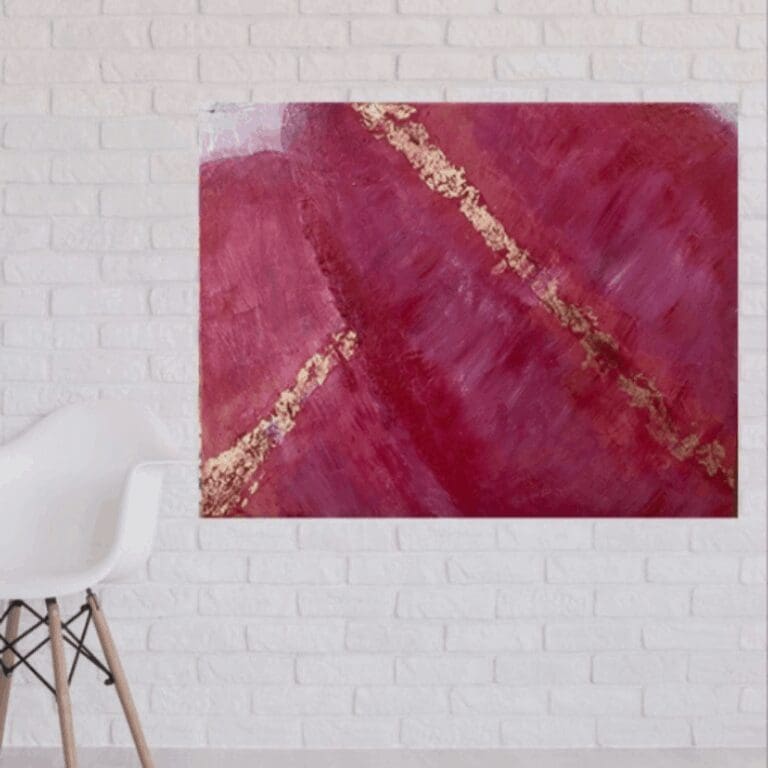
Art as a Pathway to Happiness
Art is more than just a source of beauty or entertainment—it is a powerful tool for enhancing mental health and happiness. By engaging with art, individuals can experience reduced stress, increased mindfulness, and deeper connections with themselves and others.
Whether picking up a paintbrush, visiting a museum, or simply enjoying a piece of music, incorporating art into your life is a scientifically backed way to boost your well-being.
As the science behind creativity continues to evolve, one thing remains clear: Art is not a luxury but a necessity for a happier, healthier life. So, take a moment today to immerse yourself in the art world—you might find yourself a little happier.
Call to Action
Are you ready to explore the world of art and creativity? Start small—pick up a sketchbook, visit a local gallery, or join a creative workshop. Share your experiences with us in the comments below—how has art made you happier? Let’s inspire one another to embrace the joy of creativity!
If you’d like to bring one of my artworks or paintings into your home, you can purchase them directly through this link: https://anitalouiseart.com/buy/.
Listen To Our Podcast About Can Art Make You Happier? The Science Behind Creativity Below or By clicking here.
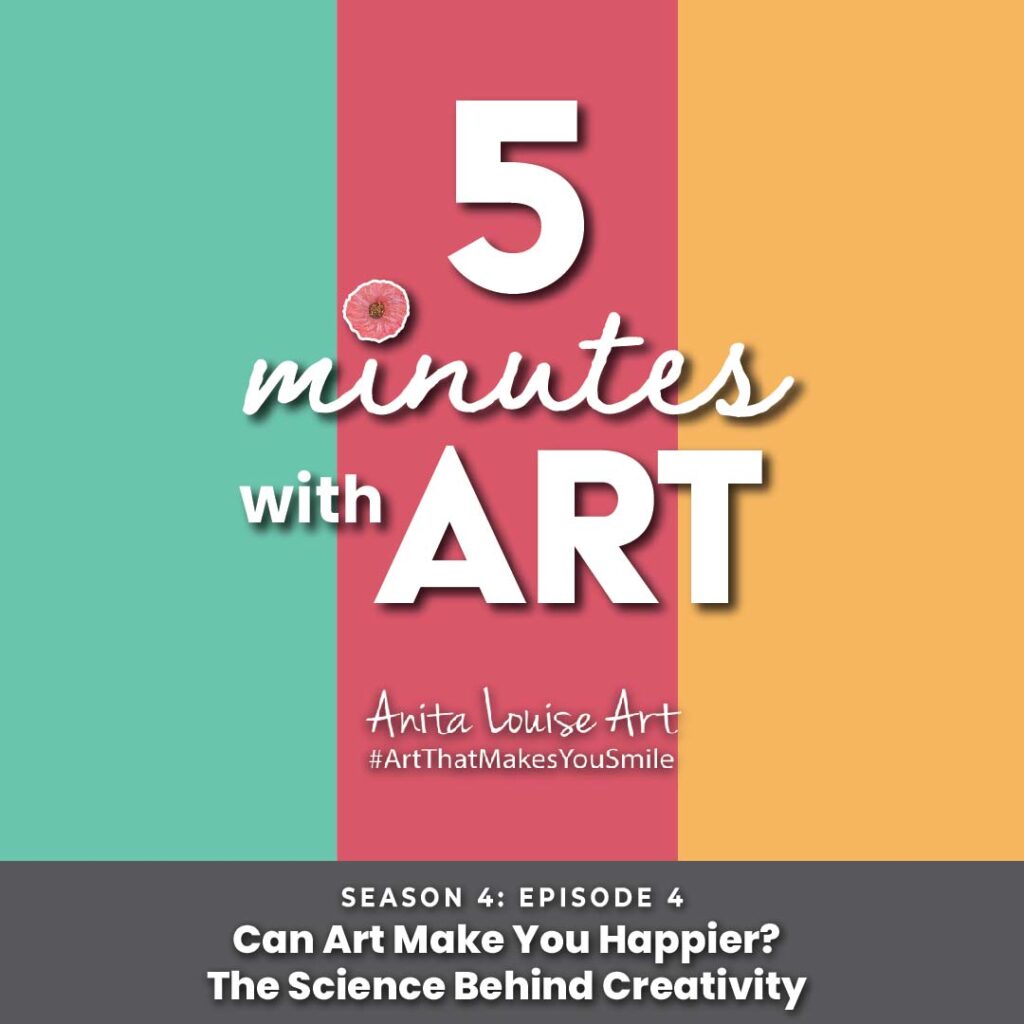
Anita Louise Art is dedicated to art education, great artists, and inspiring others to find and create their art. We love art that uplifts and inspires. #ArtToMakeYouSmile! #ArtToMakeYouHappy!
If you want to see any of my art, you can find out more by clicking here. If you are interested in what inspires me and my paintings, you can discover more by clicking here.
We have a free newsletter and would love you to be part of our community; you can subscribe to the newsletter by clicking here. If you have any questions, I would be happy to talk to you anytime. You can reach me, Anita, by clicking here.
Subscribe to our Anita Louise Art YouTube Channel with great videos and information by clicking here.
Join us for our podcast “5 Minutes With Art.” just 5 minutes a week with us to discover and learn about great art and artists. You can find out more about our podcast by clicking here.
Related Artwork
8 Ways Art Can Boost Your Mental Health And Happiness
Today, as modern life becomes increasingly fast-paced and stressful, the value of engaging with art—whether through creating or viewing—has never been more relevant. Read on as we explore 8 ways to explore the profound impact art can have on mental well-being, emphasizing how it helps reduce stress, foster joy, and enhance mindfulness.
You can find out more about 8 Ways Art Can Boost Your Mental Health And Happiness by clicking here.
Resurrecting Hope: Lifting Others With Love By Anita Louise Hummel
This work is her entry in the 13th International Art Competition of The Church of Jesus Christ of Latter-day Saints. The competition, themed “Lift Up the Hands Which Hang Down,” is inspired by the scripture from Doctrine and Covenants 81:5: “Wherefore, be faithful; stand in the office which I have appointed unto you; succor the weak, lift up the hands which hang down, and strengthen the feeble knees.” Hummel’s choice of ceramics marks a significant shift in her artistic journey, embracing a new medium to express a powerful message of hope and charity.
You can discover more by reading Resurrecting Hope: Lifting Others With Love By Anita Louise Hummel by clicking here.
The Red Flowers, By Anita Louise Hummel
The Red Flowers by Anita Louise Hummel is a painting that was inspired by bright red flowers. I initially saw these flowers on a rain jacket that a designer wore while walking down the runway in New York City’s famous fashion week. I fell in love with the colors and look of the flowers, so I decided to paint them.
By clicking here, you can learn more by reading The Red Flowers, By Anita Louise Hummel.

